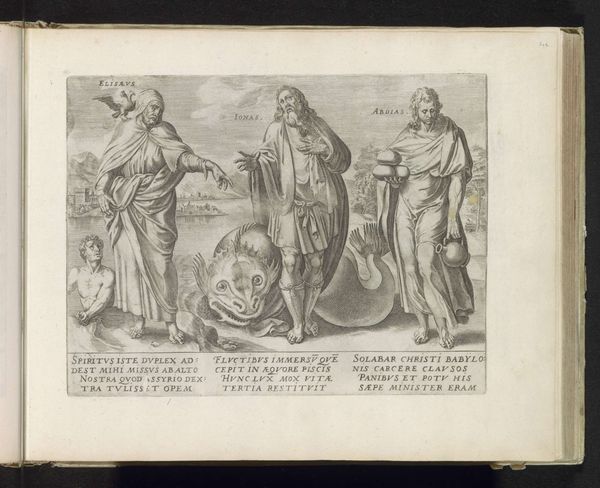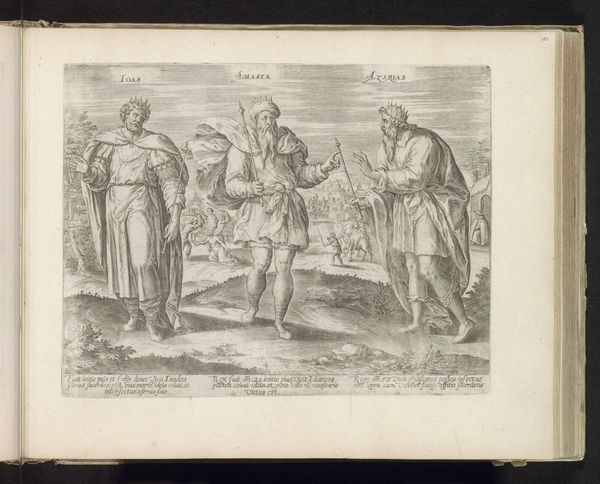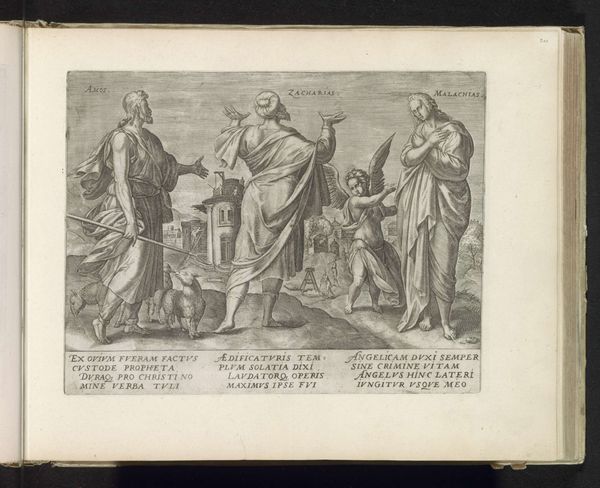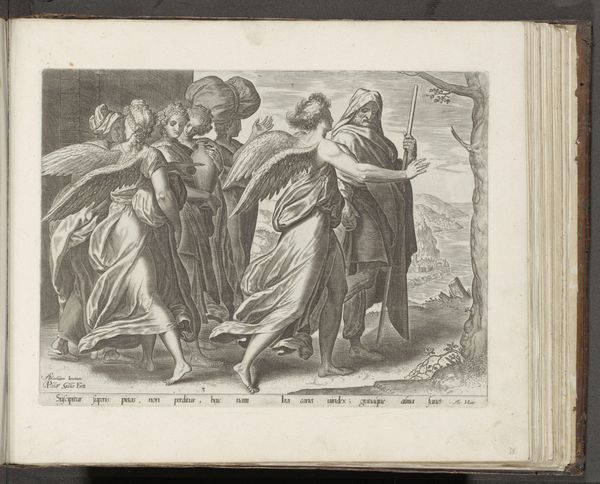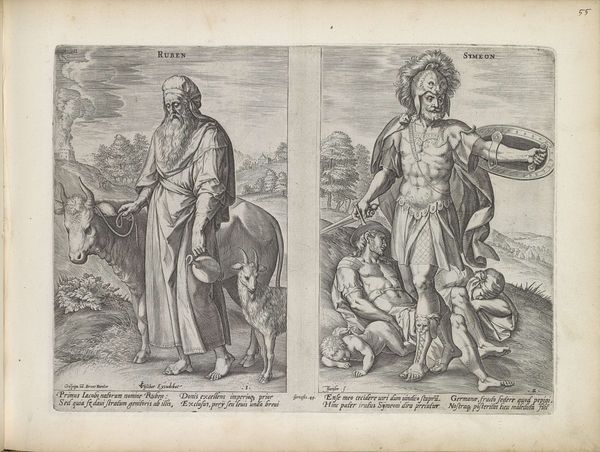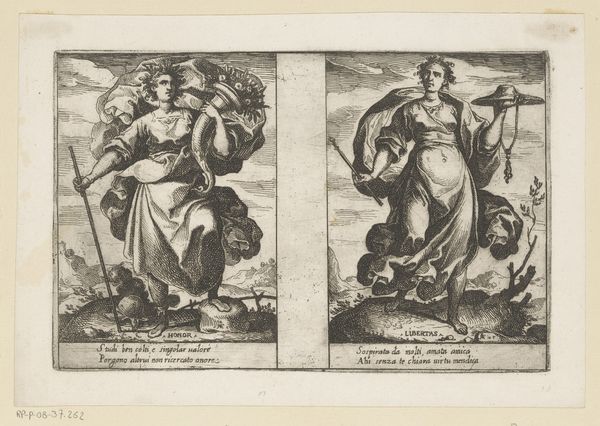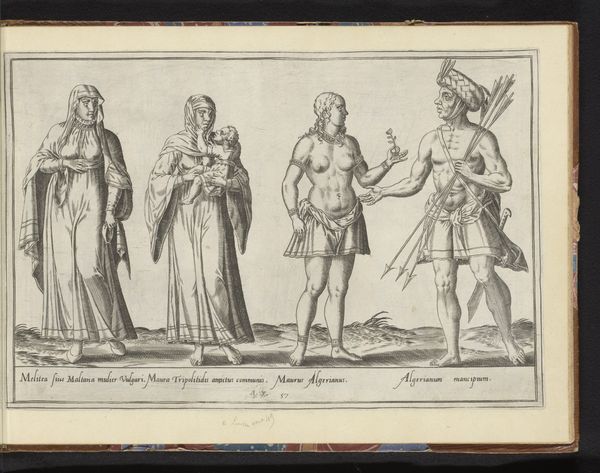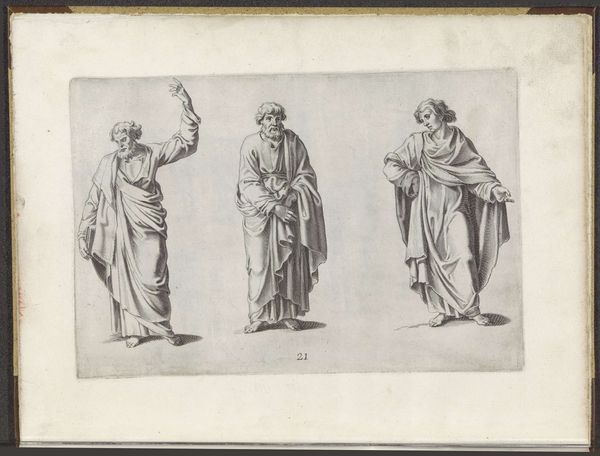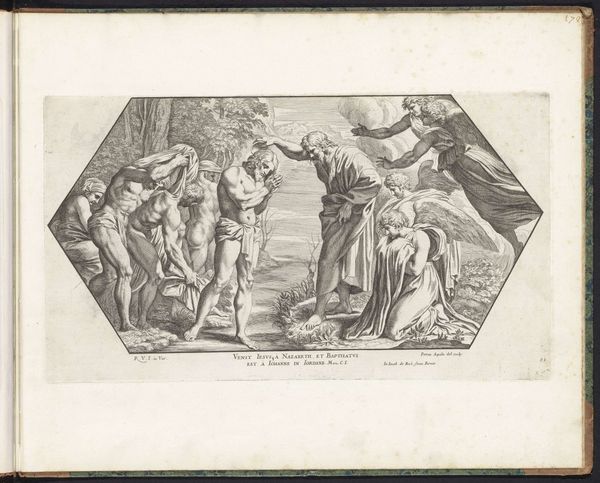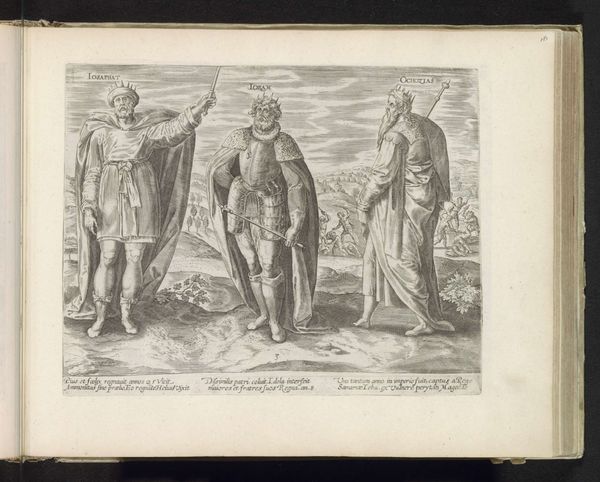
print, engraving
#
narrative-art
# print
#
figuration
#
11_renaissance
#
history-painting
#
northern-renaissance
#
engraving
Dimensions: height 218 mm, width 281 mm
Copyright: Rijks Museum: Open Domain
Curator: This engraving, titled *David, Daniël en Elia*, dating back to 1585, is the work of Jan (I) Snellinck. Look closely at the detailed lines. Editor: Striking! There’s a dramatic tension between these three figures, each set apart, yet unified by the stark contrast and line work. The materiality, I imagine, grants the engraving a rich depth. Curator: Indeed, the composition uses a clear tripartite division. What visual clues link these seemingly disparate figures, would you say? Editor: Well, there's a definite architectural rhythm that binds them through contrapposto and mirrored folds. The common drapery motifs lend a structural harmony. I can imagine Snellinck employing printmaking in the climate of the Dutch Revolt, deploying these powerful visual metaphors to bolster Netherlandish values... perhaps Protestant values? Curator: Precisely. Prophets are powerful symbols here. Snellinck employs traditional iconography: David’s harp, the stag at Daniel’s feet, and Elias, raising what might be interpreted as a resurrection. These attributes function almost as symbolic texts within the larger narrative of power, faith and rebirth. Editor: Rebirth certainly is relevant when considering that Europe at the time was emerging from religious conflicts that had a decisive impact on it. But also it speaks to the very real-world, political theatre where power was exerted, justified and legitimised by these representations. Curator: That political dimension is essential for sure. This print operates, thus, at two levels: formally, as a meticulously crafted exercise in Northern Renaissance technique; and culturally, as an assertion of specific religious and political viewpoints. The text, too, plays a key role in further cementing the allegorical associations of each figure. Editor: I concur. These dense iconographic moments underscore the sociopolitical impact of images, illustrating an art of power designed to instil piety but also legitimize existing socio-cultural forces. For me, it resonates most profoundly with our times through the figures being isolated and coming together to share collective ideologies of power. Curator: A telling observation on the enduring strength and complexity of its meaning. Editor: Thanks, for me, it really underscores how images serve social forces across centuries.
Comments
No comments
Be the first to comment and join the conversation on the ultimate creative platform.
